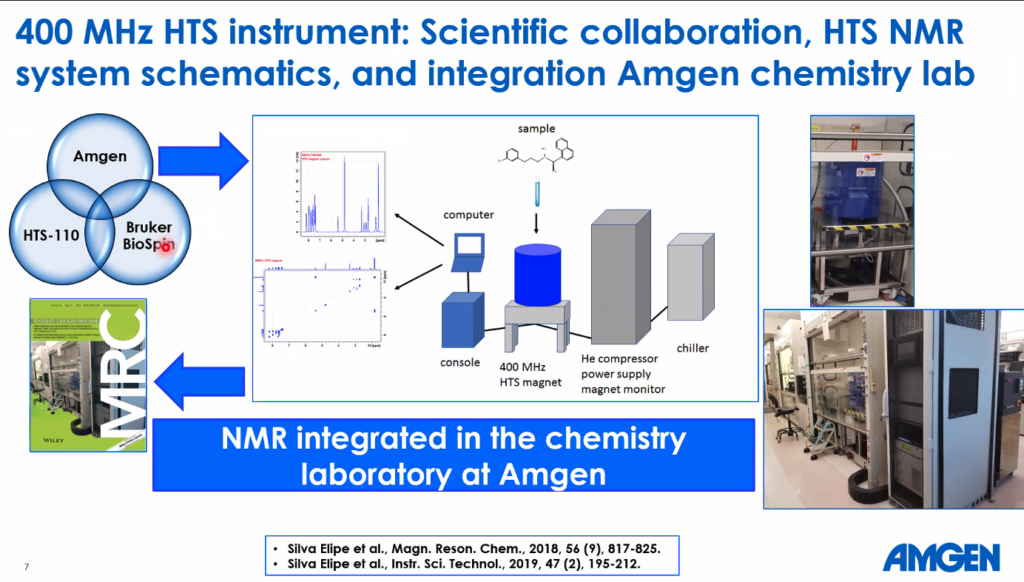The Wonders Of A 400 MHz HTS Magnet NMR System, How It Works And Our Results At Amgen
Friday, June 21st, 10 AM PDT
If you missed this webinar, please contact Cal ACS to obtain a link to the Zoom recording.
Maria Silva Elipe, Scientific Associate Director | NMR Technology | Amgen
The discovery of new ceramic materials containing Ba-La-Cu oxides in 1986 exhibiting superconductive properties at high temperatures (35 K or higher), opened a new world of opportunities for NMRs and MRIs to move away from liquid cryogens, recognized with the Nobel Prize in Physics in 1987. A prototype 400 MHz high temperature superconducting (HTS) power-driven magnet NMR spectrometer was installed at Amgen’s chemistry laboratory to be tested for a variety of applications, structure analysis, reaction monitoring, and CASE-3D studies with RDCs. The HTS “cryofree” magnet does not required liquid cryogens refills and has a smaller footprint than a comparable low temperature superconducting (LTS) magnet, with stability as the unknown factor of this technology. Our evaluation of its performance was successful.

